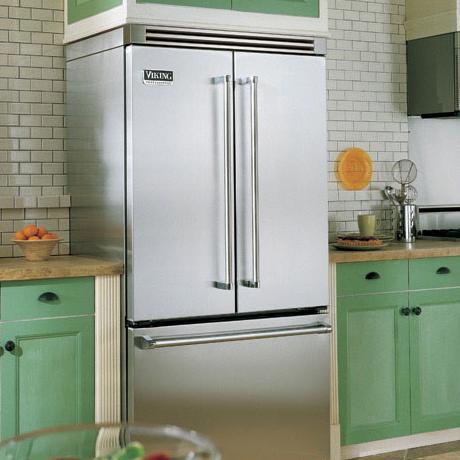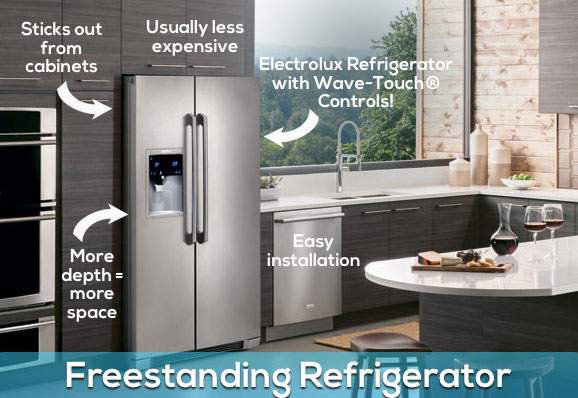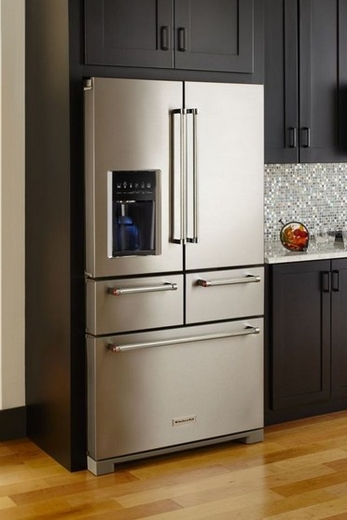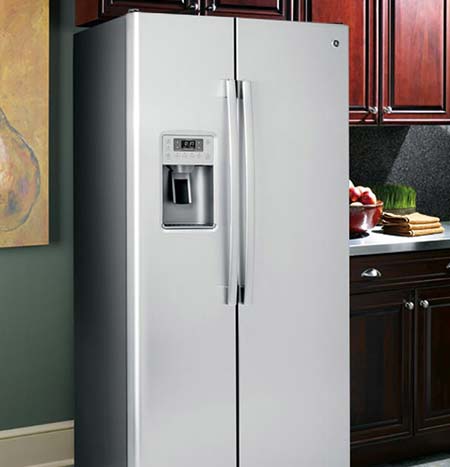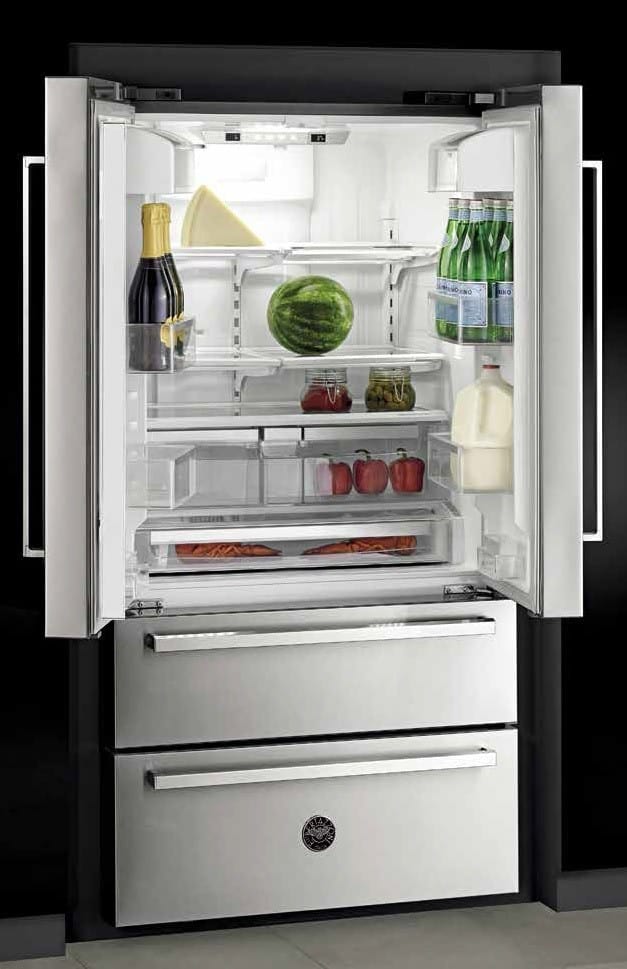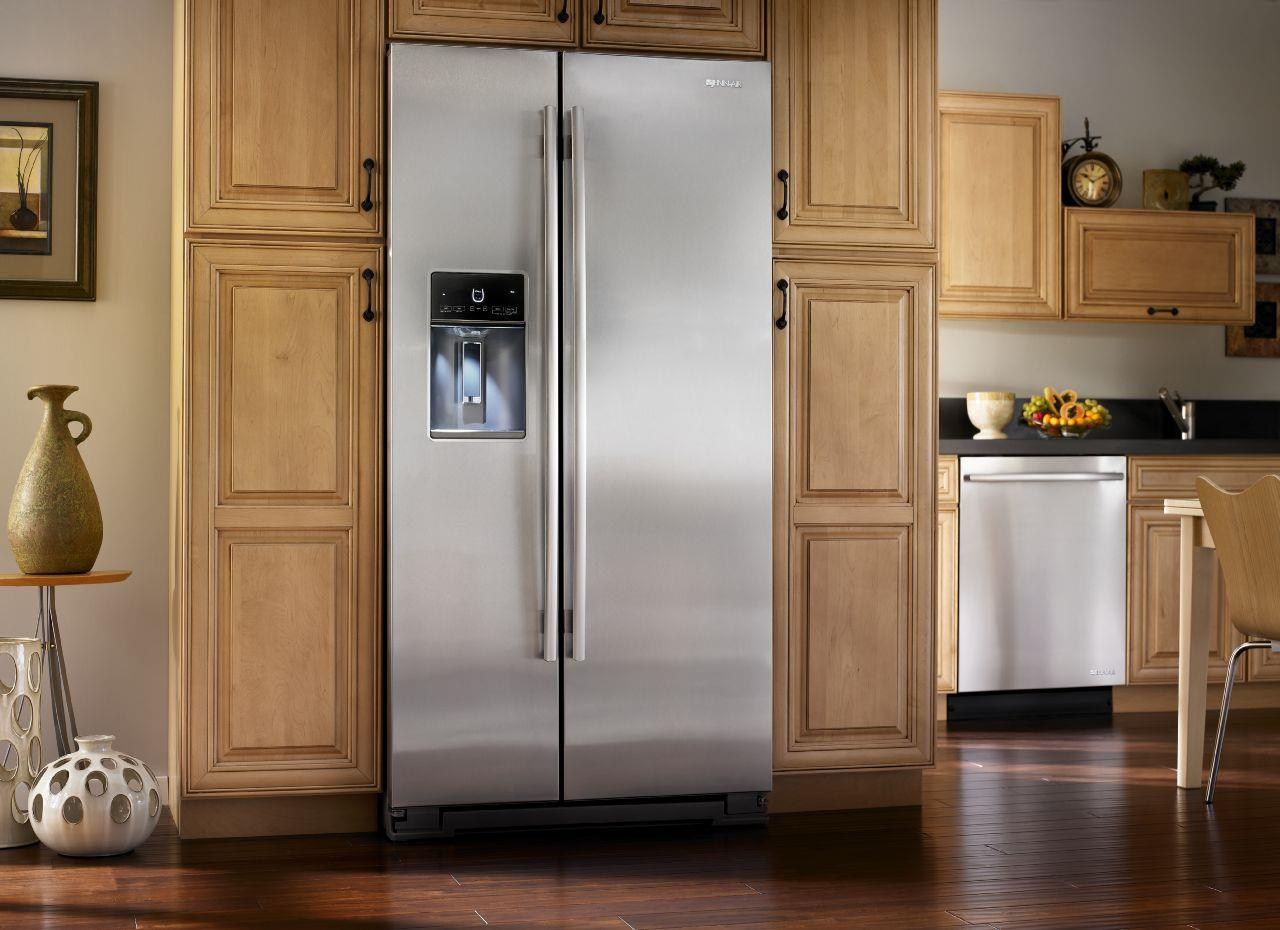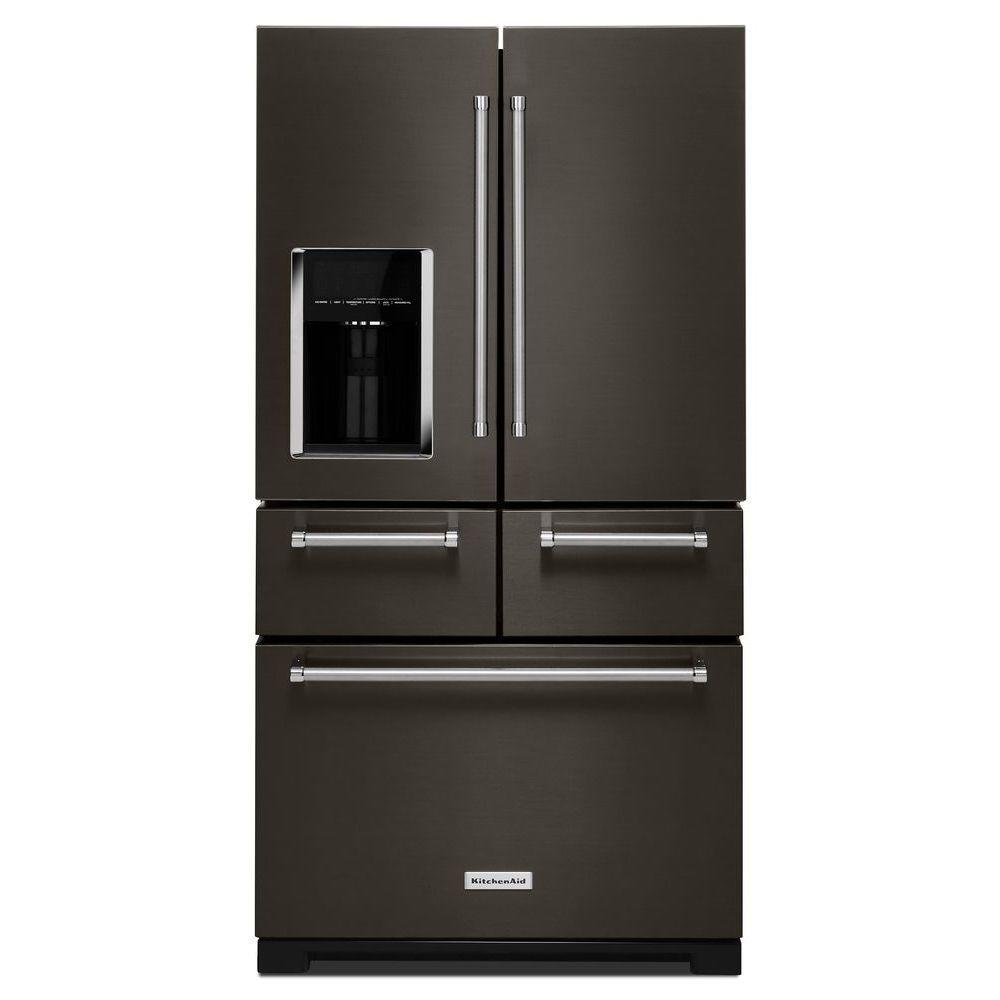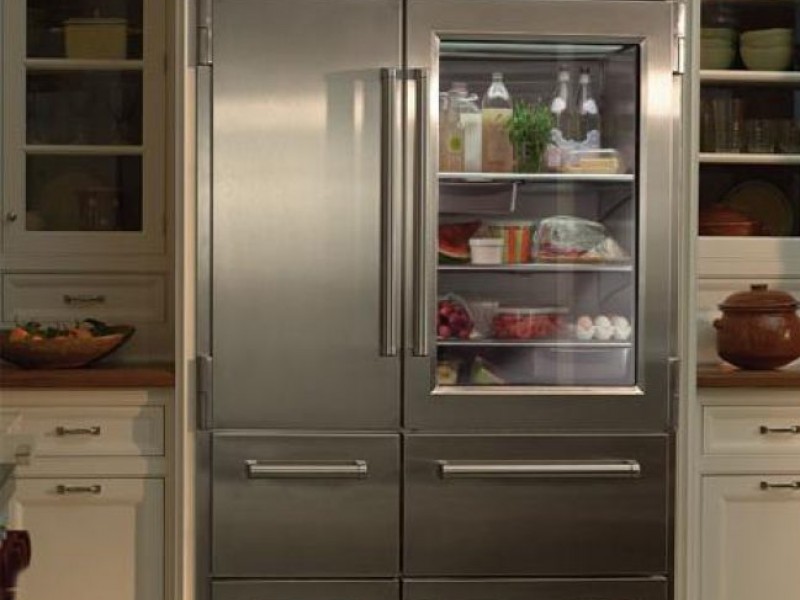For many years, a device in kitchen planning is now very high up: a freestanding refrigerator. No wonder, free-standing refrigerators often convince with chic design and a space that would have only dreamed of grandma. What pros and cons has a freestanding fridge and what else you should consider when buying, you will learn in this article.
Freestanding refrigerator: 6 benefits
- Freestanding refrigerators (free-standing appliances) are usually a bit cheaper than built-in refrigerators. Also possible additional costs for the installation omitted.
- A freestanding refrigerator brings more flexibility. He can be taken with ease during a move and if necessary also be changed in the kitchen.
- Can set visual accents. Freestanding refrigerators are now available in many colors and designs. So a freestanding fridge can also bring some pep in an otherwise very classic kitchen.
- Easy Exchange: If your life changes and you suddenly need a bigger fridge, you can easily replace a freestanding refrigerator with a more appropriate one. In built-in refrigerators, this is often not so easy.
- Ideal for large families: the selection of truly huge, freestanding refrigerators (for example, American fridges, side-by-side refrigerators) is much larger than with built-in variants.
- Special functions such as integrated ice cube machines or a crushed ice function can often be found in freestanding refrigerators.
Disadvantages of a kitchen with freestanding fridge
- Around and under the fridge, dirt and dust collect, which is often not so easy to remove.
- A freestanding refrigerator takes up more space than a built-in refrigerator.
- The sounds are usually better to hear with a freestanding refrigerator than with a built-in device.
Set up the freestanding refrigerator correctly
If you want to integrate the fridge free-standing, a minimum distance of 8 cm to the wall and also to adjacent appliances is recommended. Whether you should keep this distance when setting up a freestanding refrigerator on all sides depends on whether your model has a cooling grid on the back. Find out more below.
Tip: Choose the distance to the wall so that you can get in with your vacuum cleaner pipe. So you can easily remove the dust and dirt that accumulates behind a freestanding refrigerator. There are even models on wheels now.
With or without cooling grid – an important detail when buying a freestanding refrigerator
Before buying a free-standing refrigerator, you should pay attention to whether you need a refrigerator with or without a cooling grid – because this plays a crucial role in heat dissipation.
Free-standing refrigerators with cooling grids on the back dissipate the resulting heat above. This means that a distance of about 8 cm to the wall or other furniture on the back is sufficient.
Freestanding refrigerators without cooling grids, however, dissipate the heat mostly via the side walls. Therefore, with these free-standing refrigerators, a distance of about 8 cm should be maintained on all sides.
If you want to place your freestanding refrigerator so close between existing furniture or in a corner, you should pay particular attention to this little detail.
 Flower Love
Flower Love
